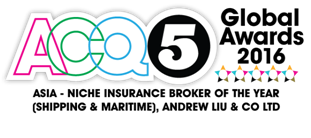Becareful of Fluorspar
There have been several casualties arising from the loading of fluorspar cargo in China. The Ministry Of Communication of China has a regulation on the loading of wet ore. This regulation issued in 1998 limits the Transportable Moisture Content of any wet fine ore cargo to 8% which is lower than IMO Transportable moisture content. Disputes have arisen from the discrepancy between the two regulations.
Below is an extract from expert cargo surveyors Brookes Bell on the potential hazards of fluorspar.
luorspar is a potentially hazardous cargo, as it can spontaneously liquefy if loaded at an excessively-high moisture content. This can lead to large-scale shifting of the cargo during the voyage, and to the development of listing as well as to the total loss of the vessel. We are aware of a considerable number of serious emergencies, including sinking and abandoned ships, arising during the carriage of Chinese fluorspar within the last year.
I therefore strongly recommend that, before contemplating to carry this cargo, your members should thoroughly familiarise themselves with the applicable parts of the IMO Bulk Code (BC Code) concerning carriage of cargoes that may liquefy. I attach to this e-mail a PDF file containing the relevant pages of the BC Code, with the most important passages highlighted in red. All of the highlighted passages should be read by your members. I have rearranged the BC Code sections in an order that makes them easier to understand and recommend they should be read in that sequence.
In brief, IMO require the shippers to sample the cargo in a representative manner prior to loading and to certify three parameters:
- The actual moisture content (which is the same as "loss on drying") of the cargo to be loaded.
- The "Flow Moisture Point" (FMP) of the cargo to be loaded. This is the moisture content at which the cargo begins to exhibit flow behaviour on a standard laboratory test, the "flow table test".
- The "Transportable Moisture Limit" (TML). This is the maximum allowed moisture content at the time of loading, and can be calculated by multiplying the FMP, as determined in the laboratory, by 0.9, i.e. if the FMP is 10% then the TML is 9%. The difference between the FMP and the TML is intended to provide a margin of safety to account for variability in moisture and sampling/analysis uncertainties.
No cargo should be accepted for loading if the certified actual moisture content is above the TML.
You have attached four test certificates by Inspectorate in Louisiana to your e-mail. Three of these show an actual moisture content above the TML; one of them even above the FMP. On the basis of these certificates, these cargoes are NOT safe for ocean carriage and should NOT be accepted for loading.
In addition, I emphasise that competent sampling and tight sealing of samples is paramount for the certification of these cargoes. In our experience, test samples that have been couriered around the world often lose some of their moisture content in transit. This would not affect the certified FMP and TML values, but may lead to erroneously low certified moisture contents. If so, then the cargoes tested by Inspectorate may be even more unsafe than they appear from the certificates.
August 2006
back





